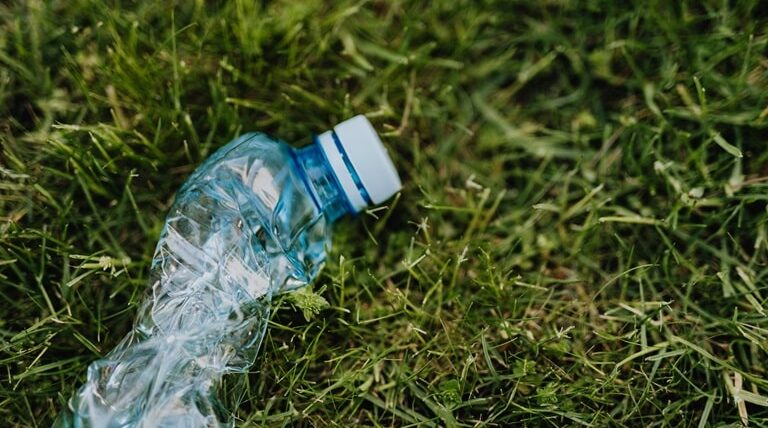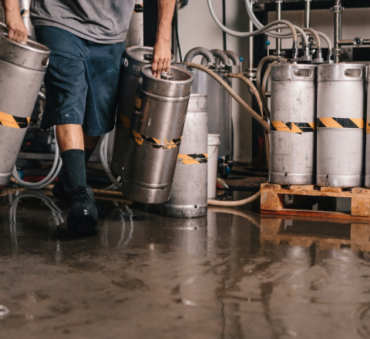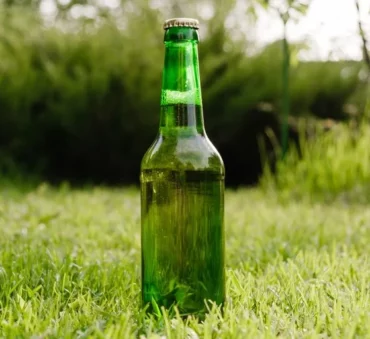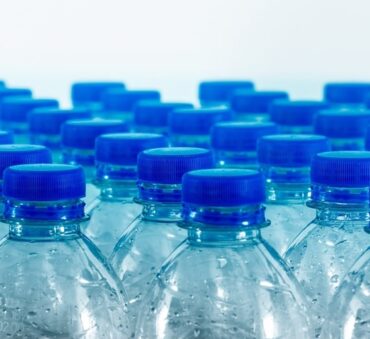Exploring the environmental impact of bottled water reveals a complex interplay of factors that extend far beyond mere convenience. The entire lifecycle of these ubiquitous plastic containers, from manufacturing to disposal, poses significant challenges to our environment. At the heart of these concerns is the staggering use of resources for producing plastic water bottles and the often-inadequate measures in managing their waste.
The reality is stark: plastic water bottles have far-reaching implications for our planet. It’s not just about the visible litter of discarded bottles but also about the less obvious, yet profound, effects on ecosystems and resource consumption. This introductory exploration aims to shed light on these multifaceted environmental impacts, offering a clear understanding of why addressing this issue is imperative for a sustainable future.
Key Takeaways:
- The production of bottled water requires significant resources, notably oil and energy, contributing to a high environmental footprint compared to tap water.
- Plastic water bottles significantly contribute to environmental pollution, with a low recycling rate exacerbating the issue. Innovative strategies are needed to enhance recycling effectiveness and manage waste efficiently.
- While bottled water is subject to safety standards, concerns about chemical leaching and microplastics highlight the need for careful consideration of the materials used in bottle production.
- The industry is moving towards sustainable packaging options, including bioplastics from dairy waste and plant-based plastics, reducing dependency on traditional, non-biodegradable plastics.
Production Process of Bottled Water and Its Environmental Toll
When we talk about the harmful effects of plastic water bottles on the environment, it’s crucial to consider the entire lifecycle of these seemingly innocuous plastic containers. From the outset, these plastic containers demand a substantial input of materials and energy, leading to significant carbon dioxide emissions.
Resource Consumption in Bottled Water Production
To create the plastic for bottles, the industry relies heavily on oil. In fact, it’s estimated that the U.S. alone uses over 17 million barrels of oil annually for water bottle production. That’s equivalent to the annual fuel needs of about 1.3 million cars.
However, oil use is only one part of the problem. The entire lifecycle of bottled water, including manufacturing, transport, and refrigeration, is a major contributor to energy use and, consequently, greenhouse gas emissions. Though, to maintain a balanced perspective, it’s essential to compare this with other beverage industries. For instance, the production of soft drinks, juices, and alcoholic beverages also involves considerable resource use, often similar or even higher, particularly in packaging and transportation.
Carbon Emissions and Water Bottling
Alongside energy consumption, bottled water production generates considerable amounts of CO2. For every 50 oz of bottled water produced, between 1.6 and 22 oz of CO2 are released into the atmosphere. This carbon footprint is alarmingly high compared to tap water, which has nearly zero associated CO2 emissions when consumed directly.
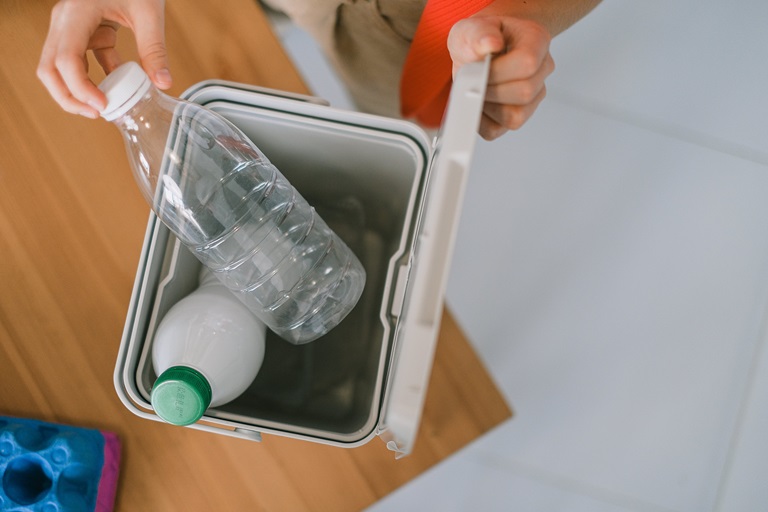
Plastic Pollution: The Legacy of Bottled Water
Each year, millions of these bottles are produced, consumed, and thrown away, contributing significantly to environmental degradation. Recent data indicates that only a small fraction of these plastic bottles are recycled effectively, with the majority ending up in landfills or, worse, as litter in natural environments. Efforts to mitigate this issue range from local recycling initiatives to global campaigns advocating for a reduction in single-use plastics.
However, the challenge remains daunting due to the sheer volume of waste generated. The statistics paint a worrying picture: billions of plastic bottles are produced annually, yet only a fraction is recycled, leaving a vast amount of waste that persists for centuries.
Oceanic Plastic Waste and Marine Life
The oceans bear the brunt of our plastic waste problem, with countless bottles ending up in marine environments. This pollution has dire consequences for marine life, leading to entanglement and ingestion issues among various species. The ingestion of plastic fragments by marine animals often results in severe injuries or death, disrupting delicate aquatic ecosystems.
Landfill Overflow and Plastic Bottle Waste
On land, plastic bottle waste significantly contributes to landfill overflow. These sites, already strained by various forms of waste, struggle to accommodate the ever-growing influx of plastic bottles. This not only poses a space issue but also leads to soil and water contamination. Effective waste management practices and consumer education are essential in addressing this escalating problem.
Health Implications of Plastic Water Bottles
One of the less-discussed but equally important aspects is its impact on human health. These implications primarily stem from the materials used in their manufacture and carry many hidden risks.
Chemical Leaching
The primary health concern is the leaching of chemicals such as Bisphenol A (BPA) and phthalates into the water. Widely used in plastic production, it is a known endocrine disruptor, which means that it mimics natural hormones in the body, potentially leading to adverse health effects. This phenomenon is also known to intensify under certain conditions, such as being exposed to high temperatures for extended periods.
High levels of BPA exposure have also been linked to other more severe health issues, including reproductive disorders, heart diseases, and an increased risk of diabetes.
Microplastics
Microplastics are also cause for alarm. While the impact of consuming them is an area of ongoing research, there are concerns about their potential to disrupt the digestive system and other bodily processes.
Other Chemical Concerns
Beyond BPA and phthalates, other chemicals involved in plastic production pose potential risks. For instance, antimony, used in creating polyethylene terephthalate (PET) bottles, can seep into water over time. While generally found below safety thresholds, the long-term effects of such exposure remain a point of concern, particularly when bottles are stored for extended periods or in warm environments.
Shelf-Life of Bottled Water
The shelf-life of bottled water is another critical aspect to consider. Contrary to common belief, bottled water does not remain fresh indefinitely. The longevity of its freshness largely depends on the storage conditions. Typically, bottled water is safe to consume for up to two years when stored properly, in a cool, dark place away from direct sunlight and strong odors. However, it’s essential to note that while the water itself does not expire, the plastic bottle can degrade over time, potentially contaminating the water with chemicals or microplastics, especially if stored in unfavorable conditions.
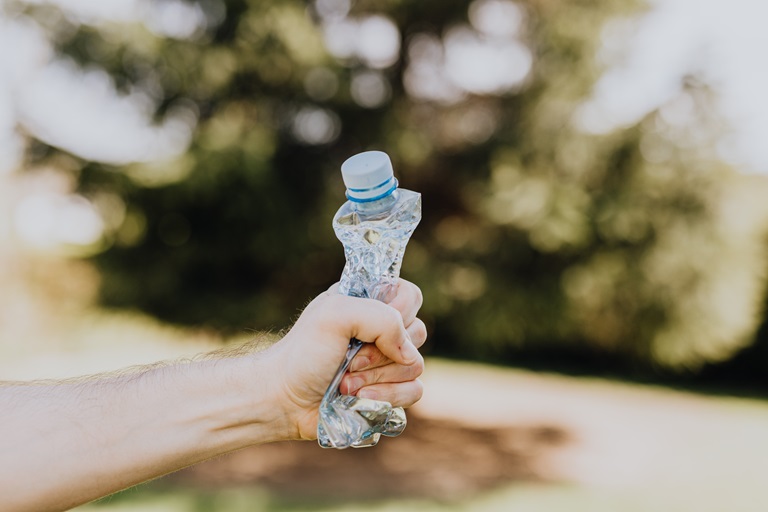
Bottled Water vs. Tap Water: How Their Impact Compares
The assumption that bottled water is safer than tap water is common, yet the reality is more nuanced. Both sources have their own set of regulations and potential risks.
Bottled Water:
Bottled water is often seen as a premium alternative to tap water, partly due to its perceived purity and the rigorous safety standards it must meet. These standards, enforced by various health and safety agencies, require thorough testing for contaminants, including chemicals and microbes. However, it’s crucial to note that these safety measures, while robust, don’t always surpass those applied to municipal tap water.
Tap Water:
Tap water might not come in a sleek bottle, but its quality and safety are subject to stringent, continuous regulation. Local water treatment facilities employ advanced purification methods to eliminate harmful contaminants. The frequency of testing and the range of contaminants tested are often more comprehensive for tap water than for bottled water, owing to the regulations set by government bodies.
Both bottled water and tap water offer different advantages and undergo different safety protocols. The choice between them should be informed by an understanding of their respective testing procedures and the actual risks involved, rather than solely on perceived notions of purity and safety.
The Challenges of Bottled Water Waste Management
While recycling and waste management programs are a cornerstone of environmental strategies, their effectiveness varies, influenced by a complex mix of challenges.
- Public Awareness Gap: A significant portion of the population is either uninformed or misinformed about correct recycling practices, which leads to lower participation and higher contamination rates in recycling streams.
- Diverse Recycling Infrastructure: The efficiency and availability of recycling facilities are inconsistent across different areas. This variability affects the volume and quality of materials that can be recycled.
- Economic Factors: The cost-effectiveness of recycling plastics is often questioned. The expenses involved in collection, sorting, and processing sometimes exceed the value of the recycled product, impacting investment in recycling technologies.
- Bottle Design Issues: Certain design elements of plastic bottles, like color or additives, can complicate the recycling process, reducing the efficiency of material recovery.
Bottling Plant Conservation Techniques
In response to growing environmental concerns, many companies have been actively refining their approach to water conservation. These efforts reflect a growing recognition of the industry’s responsibility to safeguard the very resource it depends on.
In response to growing environmental concerns, many companies have been actively refining their approach to water conservation. These efforts reflect a growing recognition of the industry’s responsibility to safeguard the very resource it depends on.
Key Conservation Measures:
- Enhanced Production Efficiency: By adopting advanced technologies, many companies have significantly cut down on the amount of water wasted during the bottling process. This includes the use of more efficient filtration and purification systems, reducing the overall water footprint per bottle.
- Sustainable Water Sourcing: Some companies are actively ensuring their water extraction processes do not deplete or harm local ecosystems and water tables, maintaining a balance between sourcing and sustainability.
- Water Stewardship Initiatives: These companies often collaborate with environmental groups and local communities to support projects focused on preserving and rejuvenating natural water bodies like rivers, lakes, and underground aquifers.
While technological improvements have shown measurable reductions in water usage, the long-term effectiveness of sustainable sourcing and stewardship initiatives is more complex to assess. These efforts require continuous commitment and adaptation to evolving environmental challenges.
Advancements in Eco-Friendly Packaging
The bottled water industry’s shift towards sustainable packaging solutions is gaining momentum with several noteworthy advancements.
Traditional plastic, glass, aluminum, and paper-based containers each have their own environmental footprints. While glass and aluminum are highly recyclable, their production processes can be energy-intensive. Paper-based containers offer a lower carbon footprint but may lack the durability required for certain products. In contrast, traditional plastics, while lightweight and durable, pose significant environmental challenges due to their non-biodegradable nature and the pollution associated with their disposal.
Innovations in Sustainable Packaging:
- Bioplastics from Dairy Waste: An exciting development is the use of bioplastics made from dairy waste. These bioplastics present a dual benefit: they utilize a byproduct that would otherwise contribute to waste and offer a more environmentally friendly alternative to traditional petroleum-based plastics.
- Plant-Based Plastics: These are derived from renewable resources like cornstarch and sugarcane. They reduce dependency on fossil fuels and offer better biodegradability.
- Water-Soluble Packaging: Innovations in water-soluble materials provide an alternative that significantly reduces waste. These materials dissolve in water, leaving minimal or no residue and impact on the environment.
Conclusion
In addressing the environmental challenges posed by bottled water, the key is not just in finding new solutions, but in rethinking our relationship with single-use plastics. The bottled water industry’s impact on our planet is undeniable, raising important questions about resource consumption, pollution, and health implications. Yet, it’s not just about identifying the challenges; it’s about actively seeking solutions. From innovative packaging like bioplastics from dairy waste to more effective recycling programs, each step forward offers a glimmer of hope.
At Shapiro, we recognize the crucial role of effective waste management in mitigating environmental impact. Our expertise in beverage destruction services offers a unique advantage in managing the lifecycle of these products. By partnering with Shapiro, companies can benefit from efficient and eco-friendly waste management solutions, aligning with their environmental goals and contributing positively to the broader efforts in reducing the ecological impact of beverage products.
Baily Ramsey, an accomplished marketing specialist, brings a unique blend of anthropological insight and marketing finesse to the digital landscape. Specializing in educational content creation, she creates content for various industries, with a particular interest in environmental initiatives.
